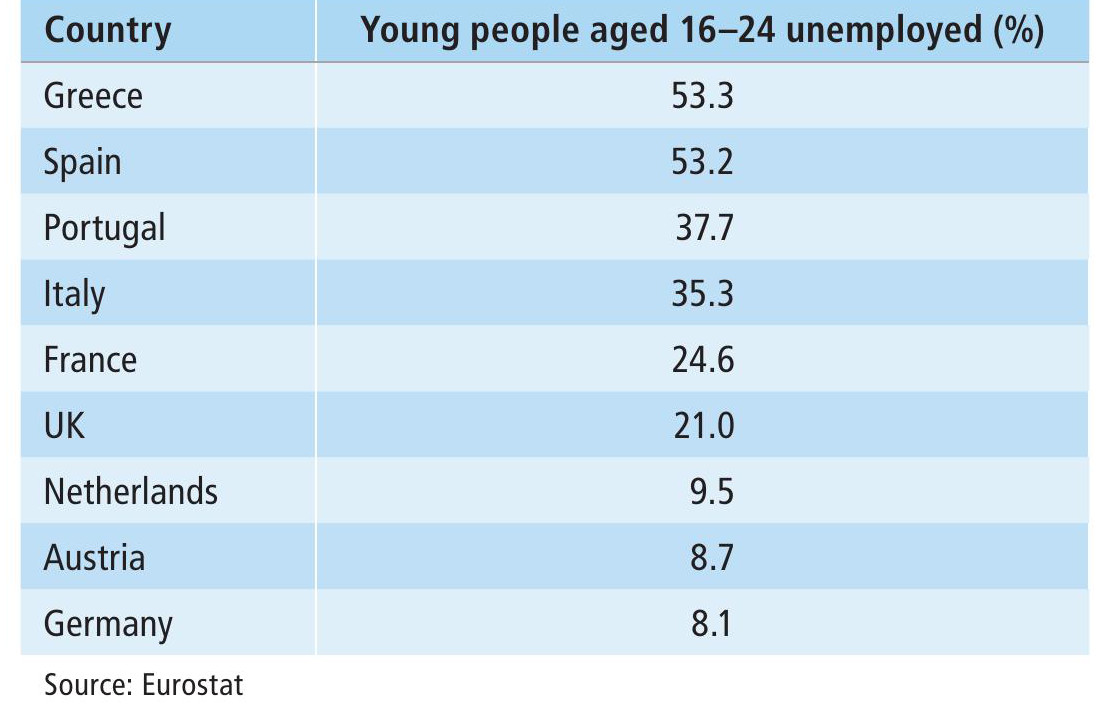
The year 2014 commemorates the hundredth anniversary of the outbreak of the First World War. So great was the loss of life among young men in the trenches and on the battlefields over the following 4 years that historians speak of ‘the lost generation’. Now, 100 years later, the chilling phrase is again being used, but this time to refer to the millions of young people in Europe lost, not to death in battle, but to worklessness and poverty.
The figures are both stark and startling. They refer to the so-called ‘Neets’ — young people aged 16–24 ‘not in education, employment or training’. It is estimated that there are around 14 million young people in this category in Europe (including over 1 million in the UK), while the number of those unemployed and seeking work stands at around 5.6 million (Table 1). Put another way, in April 2013, almost a quarter of young people under 25 looking for work in the EU were unemployed. Millions more young people are actually in work but are on low-paying, temporary contracts, often doing work far below their skill and educational level.
Your organisation does not have access to this article.
Sign up today to give your students the edge they need to achieve their best grades with subject expertise
Subscribe




